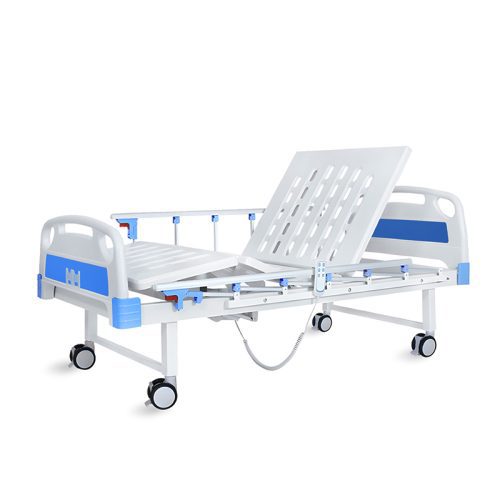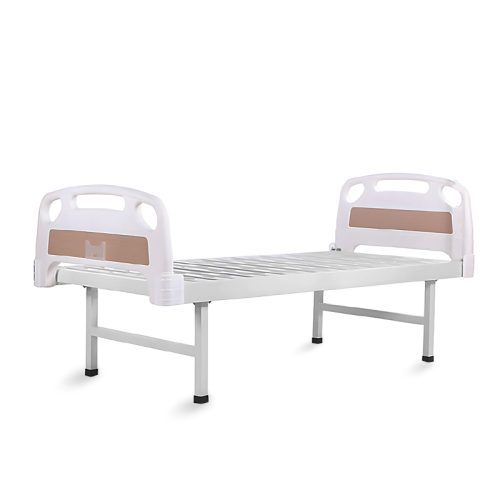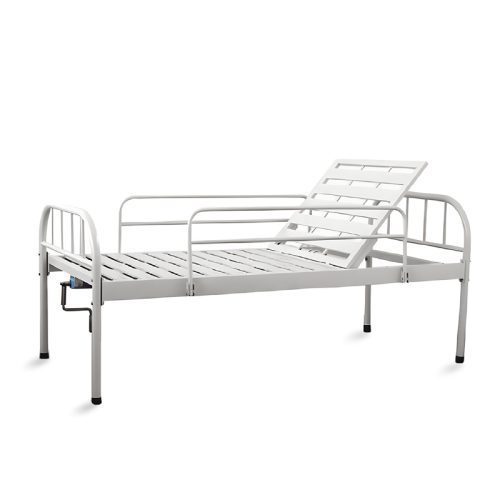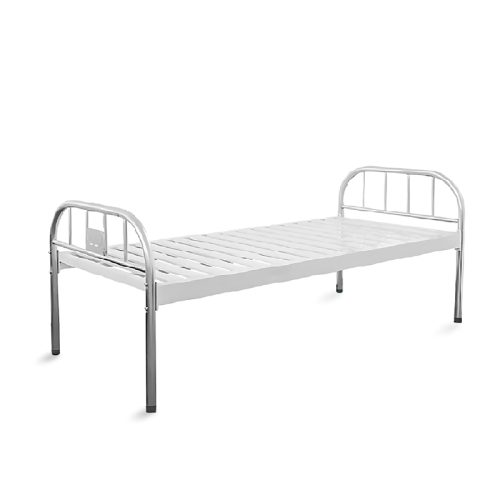
- Hospital Bed
Everything You Need to Know About Hospital Beds for Home Use in 2025
- By kelingmedical
What Are Hospital Beds for Home Use?
Specialized hospital beds designed for home settings deliver identical care quality and comfort features to traditional hospital beds. These beds have been modified specifically for home environments and include features like adjustable positions along with side rails and locking wheels. These beds suit people who need extra assistance because of health problems or physical restrictions from surgery recovery.
Hospital beds for home use provide necessary medical support in residential settings while giving patients comfort similar to hospital beds. **
Home hospital beds provide essential support for patient health while reducing caregiver stress. Here’s why they’re important:
Adjustable positions enable patients to discover their optimal sleeping and activity positions for activities such as reading and watching TV.
Side rails and locking wheels on hospital beds help prevent falls and injuries.
Home hospital beds provide convenience by removing the need for regular hospital visits so patients can heal at home.
Caregivers find it simpler to deliver medical care and monitor patients because of adjustable features.
Various hospital beds exist for home usage to meet different home care requirements. **
Home hospital beds come in multiple designs to meet various patient needs. This section outlines the primary types available:
Manual Hospital Beds
Operated with a hand crank or lever.
Affordable but requires physical effort to adjust.
The design makes this bed perfect for temporary use or patients who need limited mobility support.
Semi-Electric Hospital Beds
Combines manual and electric adjustments.
Semi-electric hospital beds provide easy adjustments for specific tasks like moving the head or foot sections.
This model offers a balanced combination of performance and price.
Full-Electric Hospital Beds
Fully powered by electricity for effortless adjustments.
Includes remote control for easy operation.
The full-electric hospital beds serve as the best choice for patients who require long-term care or who encounter major mobility restrictions.
Bariatric Hospital Beds
These beds support patients who weigh up to 1,000 pounds.
Features reinforced frames and wider designs.
This bed offers extra support and more space for people who need it.
Pediatric Hospital Beds
Specifically designed for children.
Smaller size and child-friendly features.
Ideal for young patients with medical needs.
Which characteristics should you prioritize when selecting a hospital bed to use at home? **
Select hospital bed features for home use that will fulfill your specific needs.
Select hospital beds with adjustable head, foot, and height features to achieve maximum comfort and care for users.
The bed should have side rails because they help prevent falls and increase safety.
Locking wheels hold the hospital bed steady whenever required.
Select a mattress specifically made for hospital beds to achieve the necessary support and comfort.
Hospital beds made from easy-to-clean materials help ensure proper hygiene and prevent infections.
A remote control provides effortless adjustment capabilities for users.
Choosing the correct hospital bed for home use involves evaluating various criteria and selecting options that meet specific needs and budget constraints.
Choosing a hospital bed for home use demands thorough evaluation of the patient’s requirements alongside budgetary constraints and the surrounding care setting. Here’s how to make the best choice:
Assess the Patient’s Needs The patient’s medical condition together with their mobility level and body size should guide your hospital bed choice.
Set a Budget Due to the varying prices of hospital beds for home use you need to establish your budget before deciding.
Measure Your Space Verify that the bed can fit comfortably in your room before purchasing, particularly when choosing a larger model.
Test Before Buying When you have the opportunity try several hospital beds in person to determine which one provides the best comfort.
Read Reviews Explore other users’ reviews to understand the bed’s quality level and how well it performs over time.
Using a hospital bed at home provides multiple advantages for patients and caregivers by combining enhanced comfort with improved safety features.
The home use of hospital beds provides multiple advantages to patients along with their caregivers.
Patients can select their preferred sleeping and activity positions because hospital beds provide adjustable settings.
Side rails and locking wheels help minimize the possibility of patients falling from hospital beds.
Adjustable functions enable caregivers to deliver medical care and assess patient conditions more efficiently.
Patients benefit from home hospital beds because they can recover without repeated hospital visits while staying in their familiar home environment.
Patients can save money by choosing home hospital beds over extended hospital stays or repeated medical appointments.
What maintenance steps should you follow to keep your home hospital bed in working order?
Keeping your hospital bed well-maintained is vital for its extended lifespan and operational effectiveness. Follow these guidelines to maintain your hospital bed’s optimal performance.
Perform regular cleaning of both the bed frame and mattress to stop dirt and bacteria from accumulating.
Periodically examine the bed for any damage by looking for loose screws and frayed electrical cords.
Following the manufacturer’s guidelines during use and maintenance will protect your warranty from becoming void.
Regularly rotating the mattress helps maintain even wear distribution which in turn prolongs its functional life.
Which mistakes should you avoid when selecting a hospital bed for home use?
Selecting an inappropriate hospital bed will result in discomfort and frustration for the user. Here are some common mistakes to avoid:
Hospital beds that fit one patient’s requirements might not match the needs of another patient. The patient’s specific needs and preferences should always be taken into account.
Choosing the most affordable option for a hospital bed can lead to purchasing a bed that fails to deliver proper support and comfort.
The bed must match the patient’s dimensions along with the mattress and available room space to prevent sizing problems.
Maintaining the bed through proper care is essential to extend its lifespan and functional performance. When you avoid regular cleaning and inspections you risk accelerated deterioration of your bed.
Conclusion
Hospital beds designed for home use deliver essential comfort, safety, and care to patients in their own living spaces. A thorough comprehension of the available bed types along with their essential features and benefits empowers you to choose a bed that satisfies your particular requirements. The proper hospital bed selection helps both home caregivers and healthcare facility managers improve patient care quality while promoting patient wellness.
FAQ
Q: Home hospital beds have different weight capacities based on their model design. A: The weight capacity of home hospital beds differs by model yet most beds can handle between 300 to 1,000 pounds.
Q: Home hospital beds require specialized mattresses instead of standard ones. A: Home hospital beds require specialized mattresses because standard ones do not meet their specific needs. Hospital beds require mattresses that are specially made for them.
Q: Are home hospital beds covered by insurance? A: Certain insurance plans will pay for home hospital beds when they are medically necessary. Check with your insurance provider for details.
Q: What is the price range for different types of home hospital beds? A: The price depends on both the bed’s type and its available features. Full-electric hospital beds have higher prices compared to manual hospital beds.
📧 Email: inquiry@shkeling.com
🌐 Website: www.shkeling.com.cn
We look forward to building a successful partnership with you!






